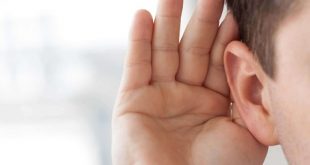 Our pets can teach us so much, and no more so than the family dog. A dog will submit to its ‘master’ by rolling on its back, inviting you to scratch its stomach. Before we domesticated the feral ‘wolf’, this was how an underling submitted to the leader of the pack.
Our pets can teach us so much, and no more so than the family dog. A dog will submit to its ‘master’ by rolling on its back, inviting you to scratch its stomach. Before we domesticated the feral ‘wolf’, this was how an underling submitted to the leader of the pack.
But what does the family dog have to do with how you sleep?
A dog that sleeps on its back, paws in the air is telling you one thing – I trust you. And it seems from research that this is the same for us humans. How we sleep, the positions we take show our personalities, as well as how happy we are or whether there are anxieties in our lives.
Scientists are constantly studying sleep and it seems that the 6 commonest sleeping positions all tell a story…
The foetal position – sleeping on your side, knees tucked up – apparently shows a tough exterior, but a softer interior. And this latest study showed this was the most common sleeping position. Just under half of the people studied (41% of the 1,000 people who took part) slept in this position. And it seems, this is a more common position for women, than it is men.
But sleeping positions transcends cultures too, with some more accepted in certain parts of the world that others. It all boils down to how people and cultures view sleep BUT, there is one common element – the unfortunate results from lack of sleep. Or, sleeping in the wrong position for you makes you grumpy.
And so it seems that lack of sleep can make you irritable, as well as being crunched in an airplane seat where you are out of your ‘normal’ position.
Other sleep positions
The log – the flat on back, arms by side position – is a position men tend to assume and show an easy going personality, according to the finding of the study conducted by the sleep specialists in London a few years ago. However, this desire to be popular and running with the crowd means that the person could be gullible, and susceptible to being taken for a ride.
Those of us who sleep on their sides, arms outstretched were personalities that found trusting others difficult; hence, they assumed a defensive positions.
And those people who stretch out on their backs, arms above their heads were found to be friendly, open people, always willing to listen without a hint of suspicion or cynicism.
Can sleep tell us this much?
Sleep has a lot more to tell us that this but, as yet, we are unable to fully unlock its secrets. What scientists and sleep experts do agree on is the need for an individual to sleep in the position that they find natural to them.
If you turn naturally on your left side, then do it or, if stretching out full length on your back is your way, don’t alter it. But what you may need to alter is the pillow on which you rest your weary head at the end of the day. Not supporting your neck, shoulders or head adequately may make you grumpy… even after 10 hours sleep.
Author Bio
Dick Beijen is our guest author of the article today. Dick is the founder of Apillow who produce luxury bedding from wool and he is very knowledgeable on, and interested in, the science behind sleep.
